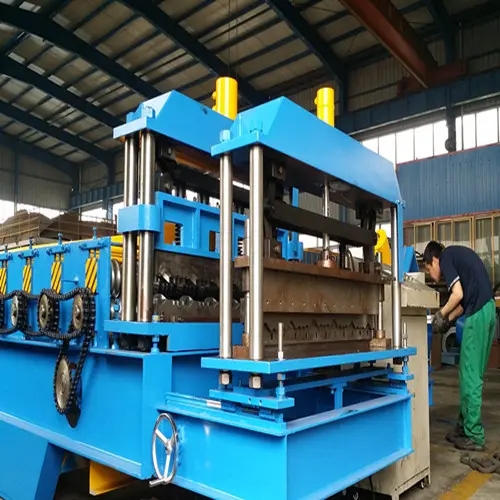
The Importance of Cold Bending Machines in Road Safety Barrier Production
In today’s world, road safety has become a paramount concern. With increasing vehicular traffic and the corresponding rise in accidents, the need for effective road safety measures has never been more critical. One of the critical components in ensuring road safety is the installation of robust road safety barriers. The manufacturing process of these barriers involves precision engineering and innovative machinery, particularly cold bending machines. This article explores the significance of cold bending machines in the production of road safety barriers, their working principles, and the benefits they offer to the industry.
Understanding Cold Bending Machines
Cold bending machines are specialized tools designed to bend metal sheets and sections without the application of heat. Unlike traditional bending methods which may require heating metals to high temperatures to achieve desired shapes, cold bending enables the manipulation of materials at room temperature. This process not only preserves the material's structural integrity but also enhances its mechanical properties, making it crucial for producing high-quality road safety barriers.
The Role of Cold Bending Machines in Road Safety Barrier Production
In the production of road safety barriers, precision and strength are essential characteristics. Cold bending machines facilitate the creation of various barrier designs, ensuring they meet strict safety standards. These machines can handle a range of materials, including steel and aluminum, providing the flexibility needed for different barrier specifications. The machines employ advanced techniques to achieve precise angles and shapes, which are vital for the barriers’ effectiveness.
Benefits of Cold Bending in Manufacturing

1. Enhanced Material Properties Cold bending increases the strength of the metal while preventing issues such as oxidation or deformation, which can occur with hot bending processes. The resulting barriers are more resilient and can withstand impact forces in the event of a collision.
2. Cost-Effectiveness The cold bending process does not require heating elements, reducing energy consumption and operational costs. Manufacturers can produce high-quality barriers efficiently, leading to lower production costs and competitive pricing in the market.
3. Environmental Considerations Cold bending is a more environmentally friendly process compared to hot bending. With no requirement for heating, the process generates less waste and minimizes carbon emissions, aligning with global sustainability goals.
4. Versatility Cold bending machines can produce a wide variety of barrier shapes and sizes. This adaptability allows manufacturers to cater to specific customer requirements, whether they need simple guardrails or more complex designs.
5. Quality Control Automated cold bending machines come equipped with advanced measurement systems that ensure consistency and accuracy in production. This capability is vital for maintaining high safety standards and meeting regulatory requirements.
Conclusion
As road safety barriers play an essential role in protecting lives on the streets, the importance of using high-quality materials and manufacturing processes cannot be overstated. Cold bending machines are pivotal in producing sturdy and reliable road safety barriers that adhere to safety standards. Their ability to enhance material properties, reduce costs, and offer versatility makes them an invaluable asset in the manufacturing industry. Continued investment in these advanced machines reflects a commitment to improving road safety and ultimately saves lives by ensuring that barriers can withstand the forces of vehicular impacts. As we look toward the future of road safety, embracing innovative technologies like cold bending will remain crucial in building safer communities.